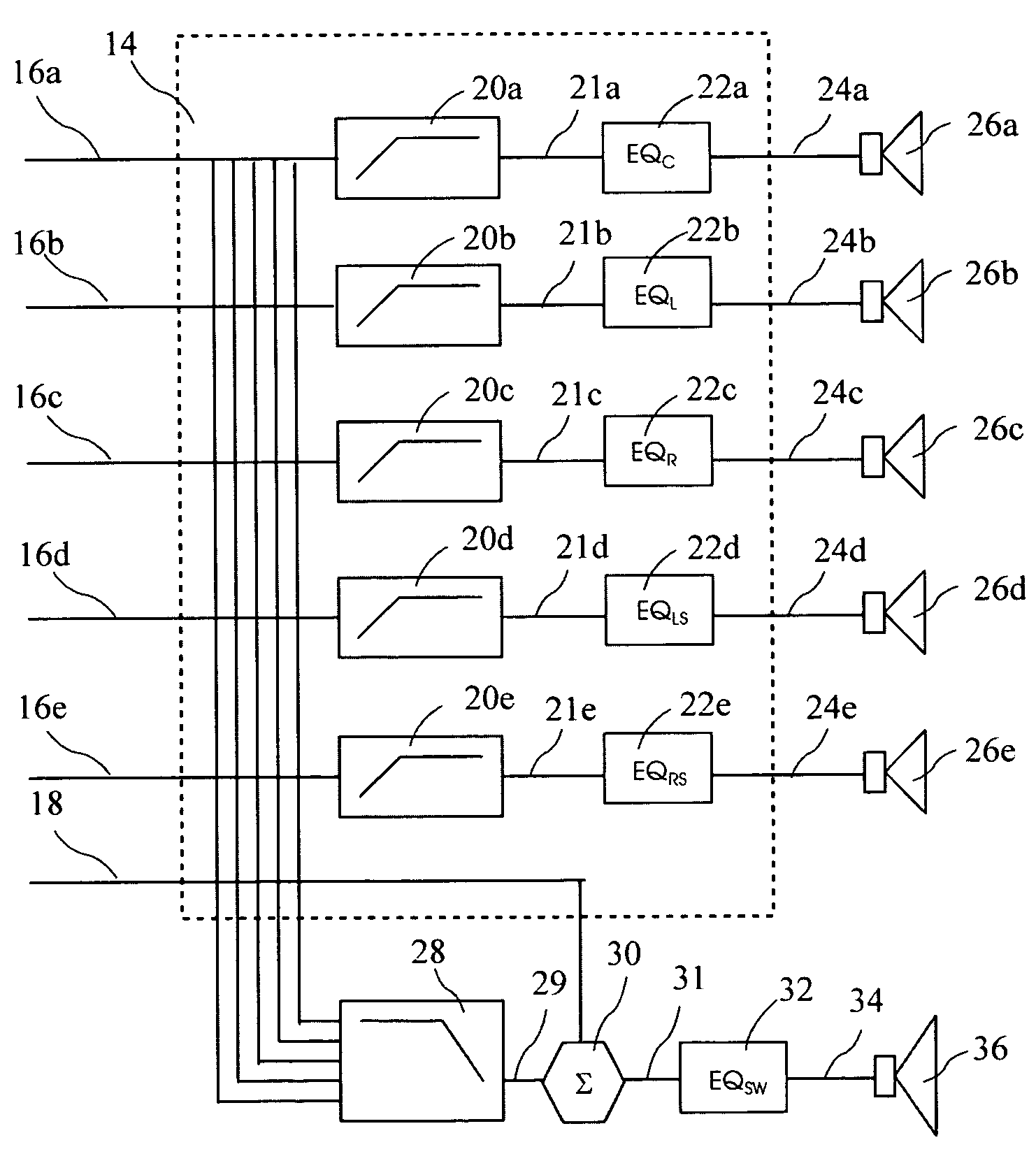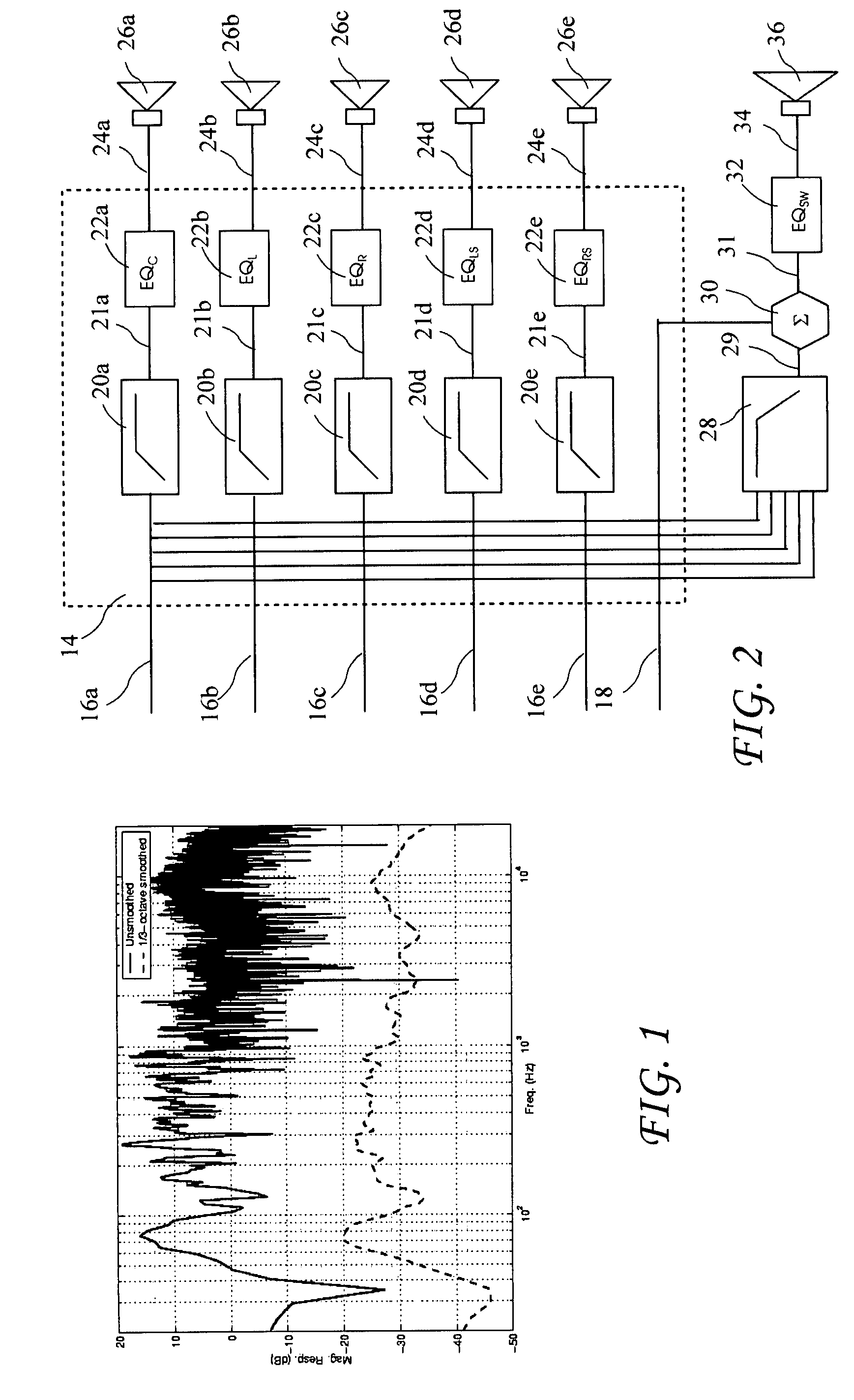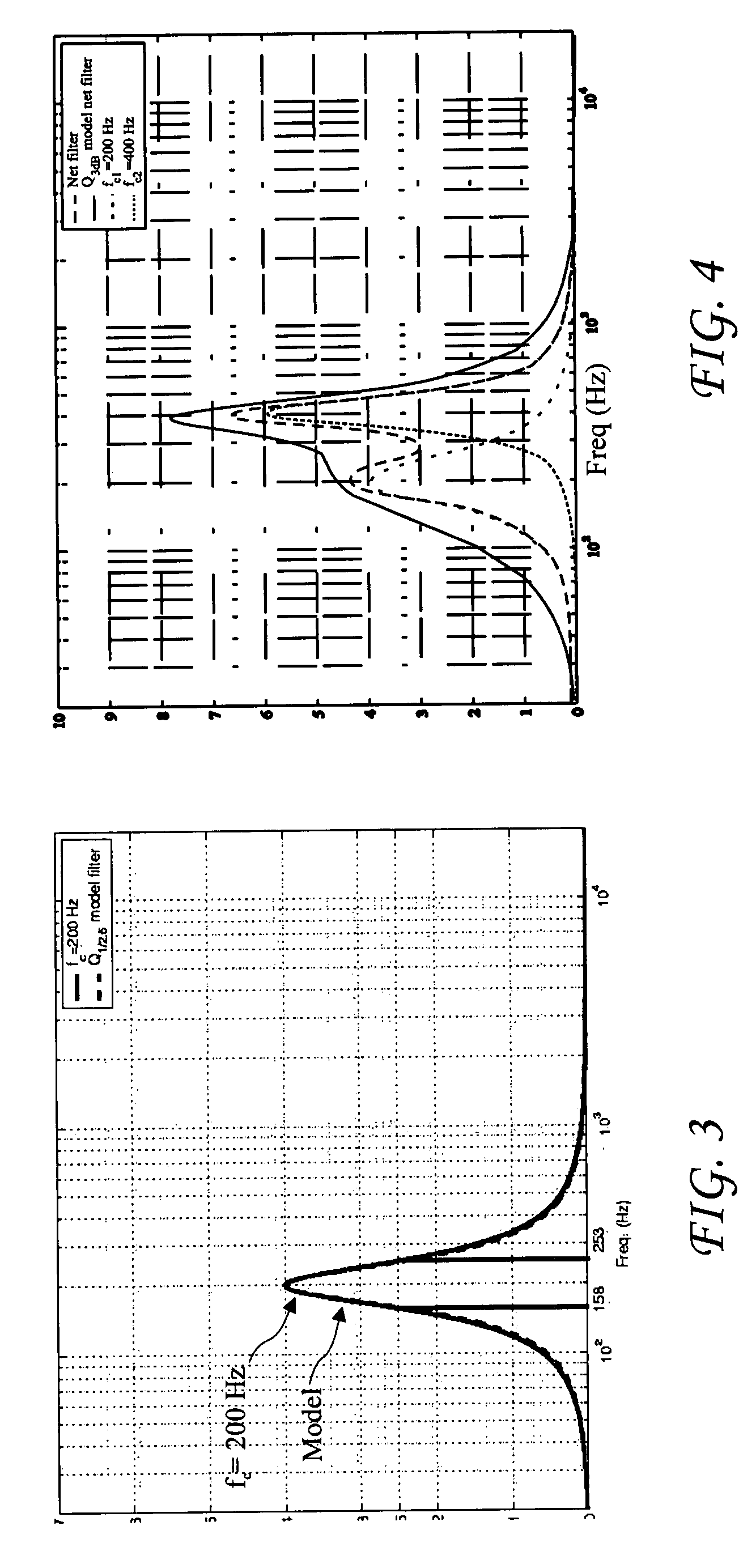Room acoustic response modeling and equalization with linear predictive coding and parametric filters
a technology of room acoustic response modeling and linear prediction, applied in the direction of transducer casing/cabinet/support, electric transducer, transducer, etc., can solve the problems of low frequency room acoustic response modeling and equalization, response modeling is especially challenging, and unwanted amplification of sound in the peak region
- Summary
- Abstract
- Description
- Claims
- Application Information
AI Technical Summary
Benefits of technology
Problems solved by technology
Method used
Image
Examples
Embodiment Construction
[0038]The following description is of the best mode presently contemplated for carrying out the invention. This description is not to be taken in a limiting sense, but is made merely for the purpose of describing one or more preferred embodiments of the invention. The scope of the invention should be determined with reference to the claims.
[0039]Low frequency room acoustic response modeling and equalization is a challenging problem. Traditionally, Infinite-duration Impulse Response (IIR) or Finite-duration Impulse Response (FIR) filters have been used for acoustic response modeling and equalization. The parametric IIR filter, also called a parametric filter, has a bell-shaped frequency domain magnitude response and is characterized by its center frequency Fc, gain G at the center frequency Fc, and a Q factor (which is inversely related to the bandwidth of the filter). Such an IIR filter is easily implemented as a cascade of lower order IIR filters for purposes of room response model...
PUM
 Login to View More
Login to View More Abstract
Description
Claims
Application Information
 Login to View More
Login to View More - R&D
- Intellectual Property
- Life Sciences
- Materials
- Tech Scout
- Unparalleled Data Quality
- Higher Quality Content
- 60% Fewer Hallucinations
Browse by: Latest US Patents, China's latest patents, Technical Efficacy Thesaurus, Application Domain, Technology Topic, Popular Technical Reports.
© 2025 PatSnap. All rights reserved.Legal|Privacy policy|Modern Slavery Act Transparency Statement|Sitemap|About US| Contact US: help@patsnap.com



